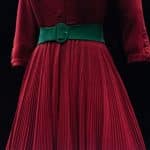In the intense, fast-paced world of baseball, hitters face a monumental task of maintaining sharp visual acuity and excellent eye-hand coordination. It’s an essential mix of physical prowess and mental dexterity that sets the best apart from the rest. The ability to spot a ball moving at speeds of over 90 miles per hour, decide on the swing, and connect with the ball all in a fraction of a second is no small feat. Skills like these don’t just appear overnight – they require a range of specific strategies and training regimens to optimize. Today, we will delve into the various techniques that can enhance both visual acuity and eye-hand coordination in baseball hitters.
Enhancing Visual Acuity
Visual acuity, or the clarity of vision, is crucial in sports, especially in baseball. The ability to see the small details can make a world of difference. For baseball hitters, the spin, speed, and trajectory of the ball are vital cues in deciding how, when, and where to swing. The following strategies can help enhance visual acuity in baseball hitters.
Additional reading : How Can Prehabilitation Exercises Reduce the Risk of ACL Injuries in Athletes?
Regular Eye Examinations
Routine eye examinations are the first step in maintaining and enhancing visual acuity. These checks will help identify any visual issues early, such as nearsightedness, farsightedness, or astigmatism, which could potentially affect a player’s performance. It is recommended that baseball players have comprehensive eye examinations at least once a year.
Sport-Specific Visual Training
Sport-specific visual training, or vision therapy, has been shown to improve visual acuity. This form of therapy involves exercises designed to enhance visual skills, such as dynamic visual acuity (the ability to see objects in motion clearly), peripheral vision, and depth perception. These exercises can include tracking balls of varying speeds and sizes or using computer programs designed to simulate game scenarios.
This might interest you : How to Create a Supportive Team Environment in Individual Sports Like Tennis?
Improving Eye-Hand Coordination
Eye-hand coordination is a critical skill in baseball. It involves the ability to process visual information and use it to guide hand movements, which is vital when trying to hit a fast-moving baseball. Here are some ways to optimize this essential skill.
Use of Coordination Drills
To enhance eye-hand coordination, players can engage in specific drills geared towards improving this skill. These may include tossing and catching exercises, hitting drills with varying ball speeds and angles, or using smaller bats to focus on precision.
Incorporate Technology
Modern technology has provided tools that can significantly aid in improving eye-hand coordination. Virtual reality (VR) training, for instance, allows players to simulate real game situations and practice their hitting skills in a controlled environment. Additionally, computer programs can help players track their progress and highlight areas for improvement.
The Role of Adequate Nutrition and Hydration
If you’re looking to optimize visual acuity and eye-hand coordination, it’s worth noting that nutrition and hydration play a significant role. Proper nutrition can boost visual health, while adequate hydration can prevent dry eyes, a condition that can affect visual clarity.
Nutrition for Eye Health
The eyes, like any other part of the body, need certain nutrients to function optimally. Antioxidants such as Vitamins A, C, and E can help protect the eyes from damage, while Omega-3 fatty acids can improve visual development and retinal function. Likewise, foods rich in Lutein and Zeaxanthin can help enhance visual acuity.
Hydration for Eye Health
Hydration is just as important as nutrition when it comes to maintaining eye health. The eyes need moisture to function properly, and dehydration can result in dry eyes, leading to blurry vision. It’s recommended that players drink plenty of water before, during, and after training or games to keep their bodies and eyes hydrated.
Mental Training and Perception Skills
Lastly, optimizing visual acuity and eye-hand coordination isn’t solely about physical training. Players should also focus on mental training and developing their perception skills. This involves the mind’s ability to interpret and make quick decisions based on the visual information received.
Mental Imagery Training
Mental imagery, or visualization, helps players improve their perception skills. By mentally rehearsing game scenarios, players can train their brain to anticipate and react to situations more quickly and accurately.
Perception Training
Perception training involves exercises designed to enhance a player’s ability to process and react to visual information. These exercises may include identifying and tracking multiple moving objects, reacting to visual cues, or making rapid decisions based on visual input.
In the demanding sport of baseball, optimizing visual acuity and eye-hand coordination can make the difference between a good player and a great one. By focusing on the strategies outlined above, players can enhance these vital skills, boosting their performance on the field.
The Influence of Adequate Rest on Visual Acuity and Hand-Eye Coordination
The importance of quality rest and sleep in sporting performance cannot be overstated. In a sport as physically and mentally demanding as baseball, ensuring adequate rest and recuperation is crucial for optimizing visual acuity and hand-eye coordination.
The Role of Sleep in Visual Acuity
Sleep plays a significant part in maintaining and enhancing visual acuity. The eyes, much like the rest of the body, need rest to function at their best. Inadequate sleep can lead to eye strain, dry eyes, and blurred vision, all of which can diminish visual acuity. It is essential to get sufficient sleep – ideally, seven to nine hours every night – to allow the eyes to recover and rejuvenate.
During sleep, the eyes rest and repair themselves from the day’s activities, leading to improved visual performance. Furthermore, REM (Rapid Eye Movement) sleep, the stage of sleep where dreaming often occurs, is thought to play a part in maintaining good visual acuity. During REM sleep, there is increased activity in the areas of the brain involved in visual processing, potentially leading to enhanced visual performance.
The Impact of Rest on Eye-Hand Coordination
Rest is equally important for optimizing hand-eye coordination. Adequate sleep allows the neurological pathways involved in coordinating visual input and motor output to rest and recover. This rest strengthens these neural connections, leading to improved eye-hand coordination.
A study published in the journal "Nature Neuroscience" found that motor learning, which is crucial for hand-eye coordination, appears to depend on the amount of REM sleep. The study found that the participants who had more REM sleep showed the most improvement in a motor task – a clear indication of the importance of quality sleep in motor performance and, by extension, hand-eye coordination.
In conclusion, adequate rest and quality sleep are crucial elements in enhancing visual acuity and hand-eye coordination. By prioritizing sleep and rest, players can ensure they are in the best condition to perform at their highest level.
Conclusion
Maintaining sharp visual acuity and excellent hand-eye coordination is a tall order that requires a combination of physical training, mental exercises, adequate nutrition, hydration, and rest. By implementing the strategies discussed in this article – regular eye examinations, sport-specific visual training, coordination drills, incorporation of technology, nutrition, hydration, mental training, perception skills, and adequate rest – baseball hitters can significantly improve their performance.
Visual acuity and hand-eye coordination are skills that can always be improved, regardless of a player’s current level of ability. It is through consistent training, both physical and mental, and adherence to an overall healthy lifestyle that players can continue to push their boundaries and reach new heights.
In the high-stakes, fast-paced world of baseball, every small improvement counts, and every carefully implemented strategy can make the difference between a good player and a great one. From the rookie to the veteran, every player can benefit from optimizing their visual acuity and hand-eye coordination, ensuring they perform at their best when it matters most.













